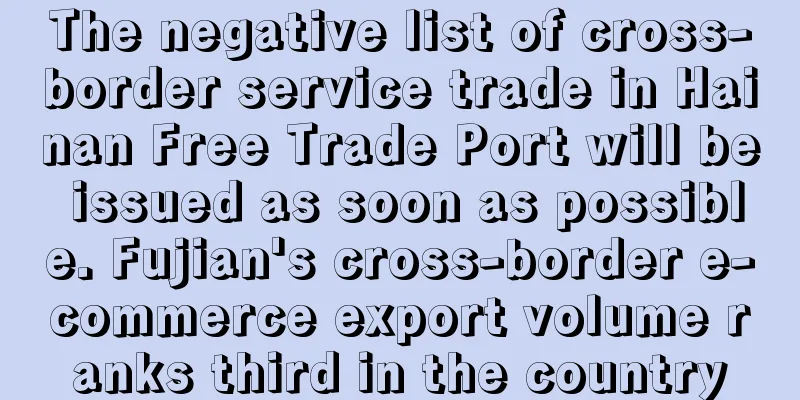Temu's warehouse is seriously liquidated! Even buyers have to go out to unload goods

|
In the past two years, Temu's overseas development speed has surprised many people. According to the number of users of several major e-commerce platforms in the world recently disclosed by Similarweb, as of the end of last year, Temu's number of independent users had reached 467 million, ranking second in the global e-commerce rankings.
As Temu achieved explosive growth in overseas markets, the number of orders from Temu sellers also began to soar. However, under such circumstances, the delivery timeliness of goods has become a major pain point for the platform.
The warehouse is seriously overstocked and buyers have to go out to unload the goods
In the first month of 2024, Temu sellers encountered unprecedented challenges. The problem of warehouse overflow has once again become the focus of attention. Many sellers reported that due to insufficient warehouse capacity, their products could not be put into storage in time, resulting in out-of-stock situations.
It is understood that this is not the first time that Temu has encountered warehouse overflow problems. In March last year, Temu's investment manager issued a notice that the warehouse stopped accepting goods due to serious warehouse overflow problems. However, a year has passed, and this problem still seems to have not been effectively resolved.
Recently, a Temu seller revealed on a social platform that his best-selling products have been out of stock one after another, but there are still more than a dozen orders waiting in line at the warehouse door. He doesn't know whether they can be shipped to the warehouse before the New Year.
What’s even more laughable is that, according to the chat screenshots provided by the seller, his buyer sent a message saying that due to the company’s shortage of staff, he would also have to go to the warehouse front line to receive and warehousing goods.
This post quickly became popular on social platforms and resonated with many Temu sellers, many of whom said they had encountered similar situations.
“I didn’t expect that even after the platform opened for more than a year and the warehouse has been expanding, the warehouse explosion has not been alleviated.” "I don't know when I can receive the goods. The key is that the traffic is gone." "The warehouse is in chaos now, and a lot of my inventory is missing for no apparent reason." "Even the buyers went to the warehouse to provide support. Hot-selling products were out of stock one after another, and more than a dozen orders were lined up at the warehouse door."
In fact, Temu has made a lot of efforts to solve the storage capacity problem. In order to speed up warehouse turnover, Temu has been opening new domestic warehouses in 2023. According to the latest information, the number of Temu's warehouses has exceeded 40.
According to industry insiders, from November 2023 to March 2024, Temu plans to double the size of its warehouse in Guangdong to meet the surge in business volume.
In addition, Temu has also conducted in-depth research on the warehousing models of many Internet companies, trying to figure out how to make warehouse turnover more flexible. There are even rumors that Temu intends to poach the head of warehousing at ByteDance to be responsible for algorithm optimization and warehousing and distribution-related work.
In terms of personnel, Temu seems to be very willing to invest. According to a recruiter, even general warehouse workers are willing to spend 2 to 3 times the salary to poach from competitors, which has led to the rapid growth of its sorting staff to tens of thousands.
This series of decisions has eased the shortage of warehouse space in Temu, but it is not the final solution.
After experiencing the liquidation incident in March last year, Temu conducted an in-depth review and has since accelerated the plan to build its own overseas warehouses.
Industry insiders believe that Temu's overseas warehouses can be used to process return packages, facilitate secondary sales, and avoid shipping returned goods back to China, which can save costs.
As various measures are implemented, I believe that Temu’s warehouse explosion problem will be effectively alleviated, although this may take a long time. However, in addition to warehouse explosion, there seem to be other problems that bother sellers.
With frequent 5-fold fines, is Temu going crazy with its fines?
In recent times, Temu’s mandatory five-fold fine regulation has once again sparked widespread discussion in the cross-border circle.
According to feedback from sellers, the reasons Temu gave for fines were mostly after-sales compensation, but the specific standards for the fines were not clearly stated. Many sellers did not realize they were fined until after the after-sales compensation was deducted.
It is understood that since January, Temu has frequently imposed fines, and many Temu sellers have been fined more than 10,000 yuan. "In January, I only withdrew more than 20,000 yuan, and the available balance has always been displayed as 0, but the fine has exceeded 190,000 yuan, and the fine orders are still increasing." A seller complained.
In response to this issue, many sellers have spoken out, saying that Temu's penalty mechanism is not reasonable for sellers:
"It's fine if the buyer just refunds the money, but the platform also wants to get involved and impose a five-fold fine. What's the point?" “I don’t know what the basis for this five-fold fine is. Temu’s audit criteria lack transparency.”
Some sellers also said that Temu's fines were not detailed, and they could only show which batch of goods was fined, but could not trace it back to the specific goods. Moreover, they said that the fine was 5 times due to poor quality, but there was not even a photo of the quality. Whether there was a quality problem or a duplicate fine was all up to Temu, and as a seller, I had no way to verify it.
On the other hand, there is no regular time period for Temu fines. The fines that pop up in the same month may be for products sold over a period of several months, and many of them are orders sold half a year ago.
What’s even more outrageous is that a seller said that he had removed the product from the shelves a long time ago, but he is still receiving fines.
Some sellers admitted that they had thought about quitting, but were caught in a dilemma. "I want to quit, but the fines will continue, and I will have to pay back all the money I earned. The more I sell, the more I lose. But I have too much inventory and I can't give it up."
Related incidents are also fermenting on major domestic social media. On a certain book platform, posts complaining about Temu's five-fold fine are endless, and the posting dates are all after January this year. Although Temu's five-fold fine has happened before and sellers have been complaining, it is clear that more sellers have suffered from it recently.
Temu semi-custodial business opens for settlement ahead of schedule
According to the latest official news from Temu, book-to-book has been fully opened for entry, and the applicant can be the same as the full-hosted one. Under the book-to-book model, merchants with goods in overseas localities can import consumer orders and ship and fulfill contracts by themselves. The official reminds sellers that they need to select "semi-hosted store 'yes'" when entering the market, which is the overseas book-to-book model.
According to industry insiders, the "half" in Temu's "semi-trusted" service is mainly reflected in warehousing and logistics. Merchants can make their own decisions and choose the warehouse logistics service provider that the platform cooperates with, or choose their own warehouse logistics service provider based on their own capabilities. Other than that, the platform is responsible for other aspects, just like "full trusted".
In contrast, the "semi-hosting" model means that merchants can choose not to use Temu's designated warehouse logistics service providers, and can decide on warehousing and logistics solutions more flexibly according to what suits them.
In this way, fully managed merchants with warehousing and logistics capabilities can choose the "semi-managed" model as needed. After the semi-managed model is opened, it can not only relieve Temu's warehousing pressure, but also sellers do not have to wait anxiously for replenishment products to be delayed in listing. The problem of warehouse explosion may become history.
In the future, as sellers’ own abilities change, the platform may give merchants more space and freedom. Temu Seller Liquidation |
<<: Cross-border e-commerce platform was fined 59 million US dollars for selling goods illegally!
>>: Amazon is still popular! A large number of entrepreneurs will join the market in 2024
Recommend
What is Innerfence? Innerfence Review, Features
Innerfence provides a two-in-one mobile payment an...
Walmart starts renting ships to cope with supply chain crisis during peak season!
After Home Depot started the ship chartering mode...
Sales increased by 10.7%! The fashion apparel industry is expected to be the biggest dark horse in the Christmas season
On August 31, the 2021 Christmas sales performanc...
What is paromi? paromi Review, Features
Paromi is a unique oasis that focuses on selling t...
Etsy to invest $50 million in customer support after sellers launch online petition
Following a joint petition signed by more than 20...
A container ship full of Chinese goods caught fire
Recently, a container ship named "ZIM Kingst...
Newegg policy update: withholding payments from some buyers and extending return periods
According to foreign media reports , some sellers...
What is Fossil? Fossil Review, Features
Fossil is a global design, marketing, distribution...
What is Gleebill (Dingfu)
Gleebill Global Solutions Inc. (Gleebill) is a fi...
What is Maxxecom? Maxxecom Review, Features
<span data-docs-delta="[[20,{"gallery"...
What is Feibao FBA? Feibao FBA Review, Features
Feibao FBA is a cross-border logistics brand in Ch...
Hundreds of millions of dollars in sales, 8 million pieces sold! Sellers break out of the siege in the United States
In recent years, with the rise of the appearance ...
What is Biying? Biying Review, Features
Biying is a new type of professional enterprise i...
Indonesia's largest tech unicorn GoTo to go public on April 4
The latest news is that GoTo, Indonesia's lar...
What is Tianjin Port (Group) Co., Ltd.? Tianjin Port (Group) Co., Ltd. Review, Features
Tianjin Port (Group) Co., Ltd. is a municipal-mana...









